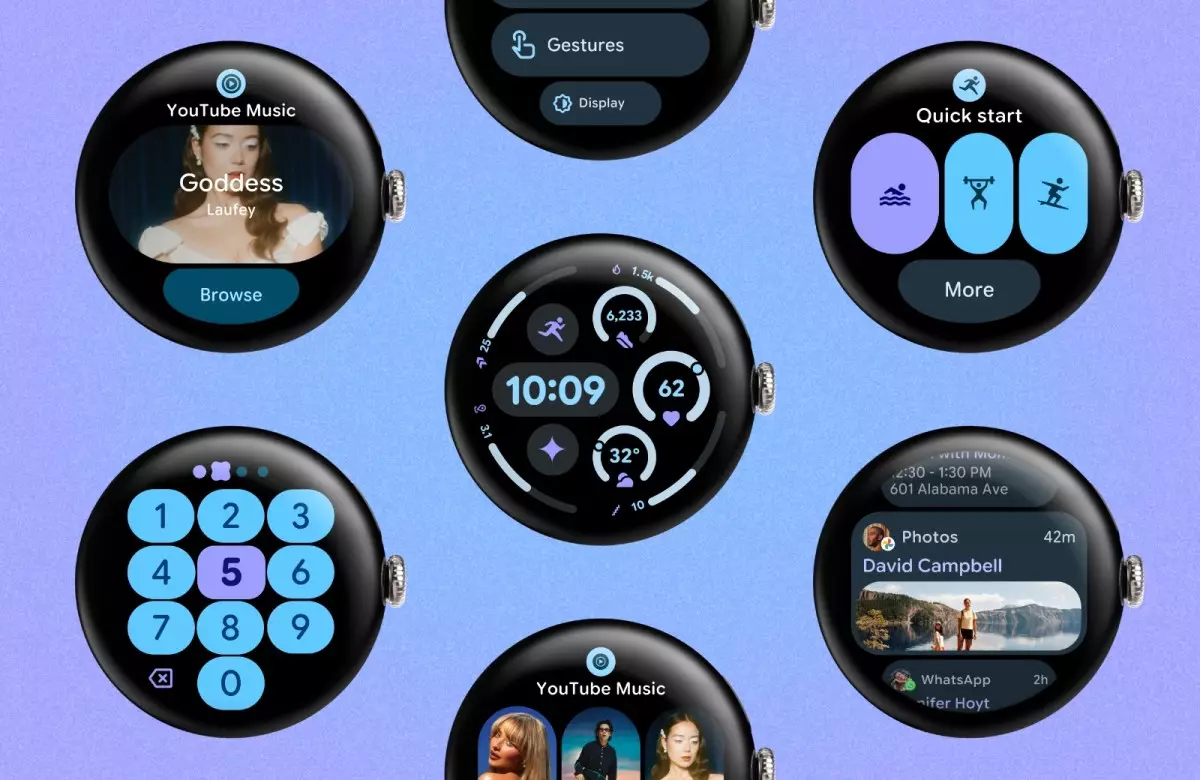Google’s latest move to integrate Gemini into Wear OS represents more than a mere software update; it signifies a strategic shift in how smart devices engage with users. By replacing Google Assistant with Gemini across its ecosystem, Google aims to create an intelligent, conversational experience that feels more human and intuitive. This approach hints at a future where smart wearables are not just assistants but proactive companions that understand context, preferences, and complex queries with remarkable nuance.
The rollout of Gemini to a broad range of Wear OS 4+ devices from brands like Pixel, Samsung, OPPO, OnePlus, and Xiaomi suggests Google’s intent to dominate the wearable AI space. This integration will enable users to activate Gemini via simple voice commands or taps, allowing them to ask questions like culinary tips or weather forecasts without fiddling with interfaces. Such capabilities promise a seamless, hands-free experience that feels organic—crucial for busy lifestyles where multitasking is the norm.
However, the true power of Gemini extends beyond simple queries. Its potential to execute cross-app tasks—such as summarizing emails or updating calendars—shifts the smartwatch from static tool to active participant in daily routines. This is where Google’s vision for a smarter ecosystem begins to materialize: devices that anticipate needs, remember vital details, and respond proactively. Yet, it’s worth questioning how well these functions will integrate into diverse user habits and whether privacy concerns will shadow the convenience—an issue that often clouds advances in AI.
Enhanced Search and Visual AI Capabilities: A Step Toward Smarter Information Access
The enhancement of Google’s Circle to Search feature underscores the growing importance of visual, contextual AI in everyday tasks. By empowering users to initiate searches through simple gestures—highlighting or circling items on a screen—Google is fostering an ecosystem where understanding begins with perception. The addition of AI Mode’s reasoning capabilities elevates this from basic recognition to complex interaction, allowing users to explore topics in depth without switching platforms or apps.
This development positions Google at the forefront of visual search, especially with the integration of AI Overviews that break down complicated concepts into digestible visuals and text. The ability to ask follow-up questions encourages a dialogue-style engagement that closely mimics genuine inquiry—an approach that could redefine how we obtain and process information on mobile devices.
Furthermore, expanding AI Mode’s availability to Google Lens through the Google app on both Android and iOS extends its reach beyond traditional boundaries. Combining this with gaming support—where players can identify characters or strategize—illustrates Google’s understanding of the multifaceted ways in which visual AI can enhance entertainment, education, and productivity. Still, this technological sophistication warrants caution; increased reliance on AI for interpretation and decision-making raises concerns about accuracy, user dependency, and data privacy.
Strategic Positioning Amidst Fierce Competition
Google’s decision to offer a year of free access to its premium AI tools for Pixel 9 Pro owners signifies an aggressive push to lock in users and showcase the potential of its AI suite. By tethering high-end hardware with advanced AI capabilities like Veo 3, Google is creating a compelling ecosystem that could sway consumers towards its platform.
This strategy indicates confidence in AI’s transformative power but also highlights an acknowledgment of fierce competition from rivals like Apple, Samsung, and emerging startups. The integration of Gemini into wearables and search functions exemplifies a broader trend: technology companies are now investing heavily in AI-driven user experiences to differentiate themselves. In doing so, Google is betting that the combination of contextual understanding, visual recognition, and cross-platform seamlessness will set it apart.
Yet, the risk remains that these features, no matter how impressive, could fall short if not executed flawlessly. The integration must feel natural, reliable, and respectful of privacy to truly resonate with users. Otherwise, the risk of user disillusionment or privacy backlash looms large—two pitfalls that have marred similar launches in the past.
In essence, Google’s recent announcements reveal a bold vision: to redefine interaction paradigms through AI. This leap, while promising, demands meticulous execution and a keen eye on the evolving concerns around privacy and dependency. If managed well, it could position Google not just as a utility provider but as an indispensable, intelligent partner in everyday life.

